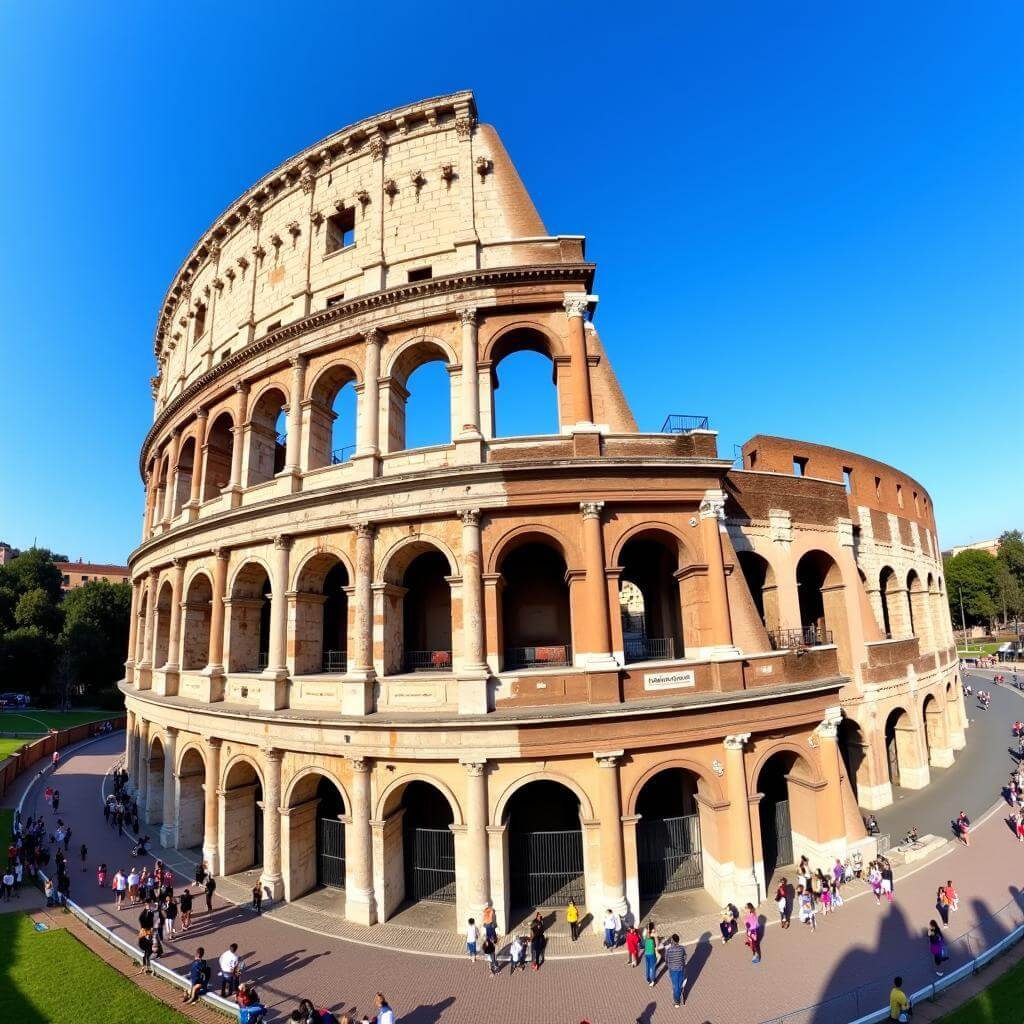The topic of describing a historical site is a common one in IELTS Speaking tests. It has appeared frequently in past exams and is likely to continue being a popular topic in future tests. This subject allows examiners to assess a candidate’s ability to discuss cultural experiences, express personal opinions, and use descriptive language effectively.
Part 1: Introduction and Interview
In this section, the examiner may ask general questions about historical places. Here are some possible questions and a sample answer for one:
- Do you enjoy visiting historical sites?
- What’s the most interesting historical place you’ve been to?
- How often do you visit historical sites?
- Do you think it’s important to preserve historical buildings?
Let’s look at a sample answer for the question: “Do you enjoy visiting historical sites?”
Sample Answer (Band 7-8):
“Absolutely! I find visiting historical sites incredibly fascinating. There’s something truly captivating about walking in the footsteps of people who lived centuries ago. I especially enjoy exploring ancient ruins and learning about the stories behind them. It’s like stepping back in time and getting a firsthand glimpse into how our ancestors lived. Plus, I think it’s a great way to gain a deeper understanding of our cultural heritage and how it shapes our present.”
Describe a historical building you have visited
Part 2: Long Turn
Cue Card
Describe a historical site you visited
You should say:
- Where it was
- When you visited it
- What you saw there
- And explain why you think this site is important
Sample Answers
Band 6-7 Answer:
“I’d like to talk about my visit to the Colosseum in Rome, Italy. I went there last summer during a family vacation. The Colosseum is a huge amphitheater in the center of Rome, and it’s really old – about 2000 years old! When I got there, I was amazed by how big it was. The walls are very high, and there are many arches and columns.
Inside, I saw the arena where gladiators used to fight. There were also underground chambers where they kept animals and gladiators before the fights. The guide told us interesting stories about the games and events that happened there long ago.
I think this site is important because it shows us how advanced Roman engineering was. It’s incredible that such a big structure is still standing after so many years. Also, it helps us understand Roman culture and entertainment. The Colosseum is a symbol of Rome and Italy’s rich history.”
Band 8-9 Answer:
“I’d like to share my experience of visiting the awe-inspiring Colosseum in Rome, Italy. I had the privilege of exploring this architectural marvel last summer during a meticulously planned family trip to Europe.
The Colosseum, an iconic symbol of Imperial Rome, stands majestically in the heart of the city. As I approached this colossal amphitheater, I was immediately struck by its imposing presence and intricate design. The structure, dating back to 80 AD, is a testament to the ingenuity of Roman engineering and architecture.
Upon entering, I was overwhelmed by the sheer scale of the arena. The elaborate network of underground chambers, known as the hypogeum, was particularly fascinating. These subterranean rooms once housed gladiators and wild animals before they were thrust into the spectacles above. The weathered stone and crumbling arches seemed to whisper tales of the brutal entertainment that once captivated thousands of spectators.
I believe the Colosseum holds immense historical significance for several reasons. Firstly, it serves as a tangible link to the Roman Empire, offering invaluable insights into their social structure, engineering prowess, and cultural values. Moreover, its preservation and ongoing restoration efforts highlight the importance of safeguarding our cultural heritage. The Colosseum also serves as a poignant reminder of the progress humanity has made in terms of ethics and entertainment, prompting us to reflect on our past and consider our future. In essence, this magnificent ruin stands not just as a tourist attraction, but as a powerful educational tool and a symbol of human achievement and folly.”
Describe a time when you visited a place with historical significance
Follow-up Questions
- How do you think we can make historical sites more interesting for young people?
- What can we learn from visiting historical sites?
Sample Answer for Question 1 (Band 8-9):
“To make historical sites more engaging for the younger generation, I believe we need to harness the power of technology and interactive experiences. For instance, implementing augmented reality (AR) applications could allow visitors to visualize how the site looked in its prime, bringing history to life before their eyes. Virtual reality (VR) experiences could immerse young people in historical events, making them feel like active participants rather than passive observers.
Additionally, gamification elements could be introduced, such as scavenger hunts or puzzle-solving activities that encourage exploration and critical thinking. Social media integration, like Instagram-worthy photo spots with historical context, could also appeal to the digital-native generation.
Furthermore, collaborating with schools to develop curriculum-linked programs and hands-on workshops at these sites could foster a deeper connection between young people and history. By making history tangible and relevant to their lives, we can spark curiosity and cultivate a lifelong appreciation for our cultural heritage.”
 Colosseum in Rome, Italy – A Famous Historical Site
Colosseum in Rome, Italy – A Famous Historical Site
Part 3: Two-way Discussion
In this section, the examiner will ask more abstract questions related to historical sites and their importance. Here are some possible questions:
- How does learning about history benefit society?
- Do you think governments should invest more in preserving historical sites?
- How might historical sites be affected by climate change?
Let’s look at a sample answer for the first question:
Sample Answer (Band 7-8):
“I strongly believe that learning about history brings numerous benefits to society. Firstly, it helps us understand our roots and cultural identity. By studying the past, we can see how our customs, traditions, and values have evolved over time.
Moreover, history provides valuable lessons that can guide our decision-making in the present and future. For example, by studying past conflicts, we can gain insights into diplomacy and conflict resolution, potentially helping to prevent similar issues in the future.
History also fosters critical thinking skills. When we analyze historical events, we learn to evaluate different perspectives, question sources, and draw conclusions based on evidence. These skills are crucial in today’s world of information overload and ‘fake news’.
Lastly, I think learning about history promotes empathy and understanding between different cultures and societies. When we understand the experiences and challenges faced by different groups throughout history, we’re more likely to appreciate diversity and work towards a more inclusive society.”
Describe a time when you visited a famous historical site
Key Vocabulary and Phrases for High Scores
-
Awe-inspiring /ɔː-ɪnˈspaɪərɪŋ/ (adjective): Extremely impressive or daunting; inspiring great admiration.
Example: “The ancient temple was truly awe-inspiring, with its towering columns and intricate carvings.” -
Cultural heritage /ˈkʌltʃərəl ˈherɪtɪdʒ/ (noun): The legacy of physical artifacts and intangible attributes of a group or society.
Example: “Preserving our cultural heritage is crucial for maintaining our identity and connection to the past.” -
Architectural marvel /ˌɑːkɪˈtektʃərəl ˈmɑːvl/ (noun): A building or structure that is exceptionally beautiful or impressive from an architectural standpoint.
Example: “The Taj Mahal is widely regarded as an architectural marvel, showcasing the pinnacle of Mughal design.” -
To be steeped in history /tə bi stiːpt ɪn ˈhɪstəri/ (phrase): To be full of historical associations.
Example: “The old town is steeped in history, with its medieval buildings and ancient cobblestone streets.” -
To stand the test of time /tə stænd ðə test əv taɪm/ (idiom): To remain useful, valid, or valued for a long period.
Example: “The Roman aqueducts have stood the test of time, demonstrating the advanced engineering of ancient civilizations.”
Describe a time when you visited a historical site
Examiner’s Advice
To achieve a high score in the IELTS Speaking test when describing a historical site:
- Use a wide range of vocabulary, including less common words and phrases related to history and architecture.
- Demonstrate your ability to use different tenses accurately, especially when talking about past experiences and historical events.
- Provide detailed descriptions and personal opinions to show your ability to communicate ideas clearly and fluently.
- Use a variety of sentence structures, including complex sentences, to showcase your language proficiency.
- Practice speaking about different historical sites to improve your confidence and fluency on this topic.
- Stay up-to-date with current issues related to historical preservation and be prepared to discuss them in Part 3.
Remember, the key to success is not just knowing about historical sites, but being able to articulate your thoughts and experiences effectively in English.
 Student practicing IELTS Speaking
Student practicing IELTS Speaking
Describe a time when you visited a friend’s house
By following these guidelines and consistently practicing, you’ll be well-prepared to tackle any question about historical sites in your IELTS Speaking test.


